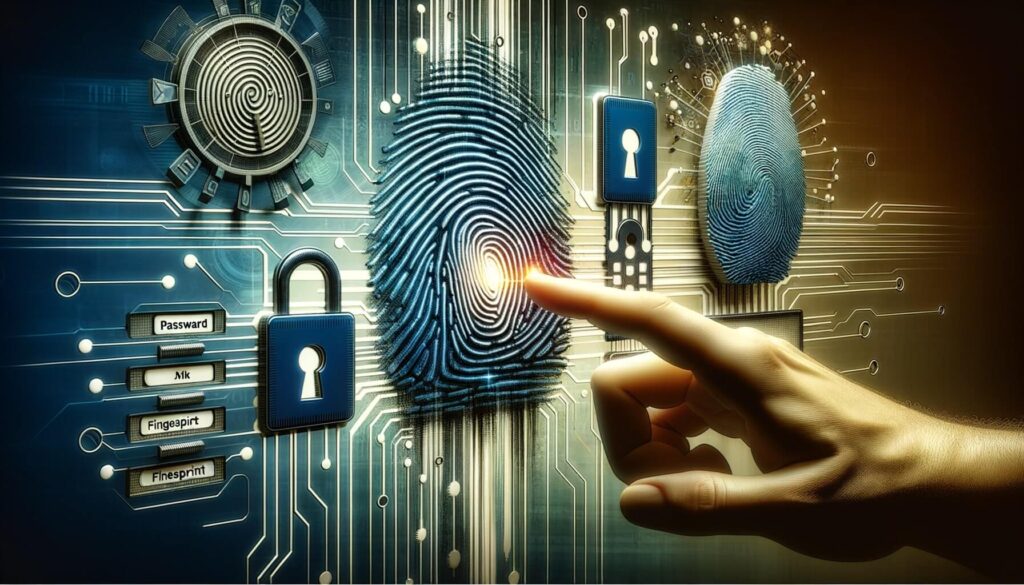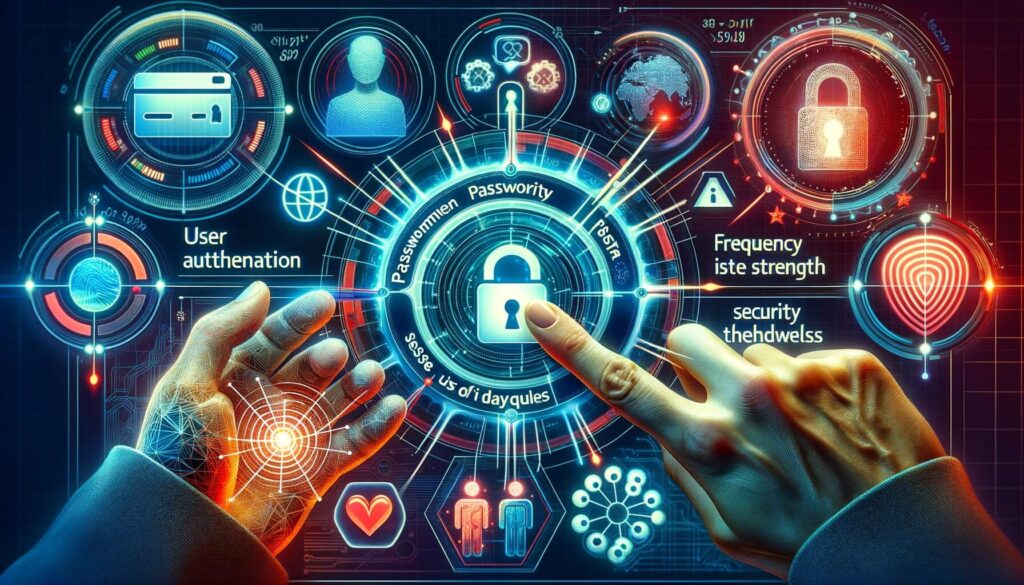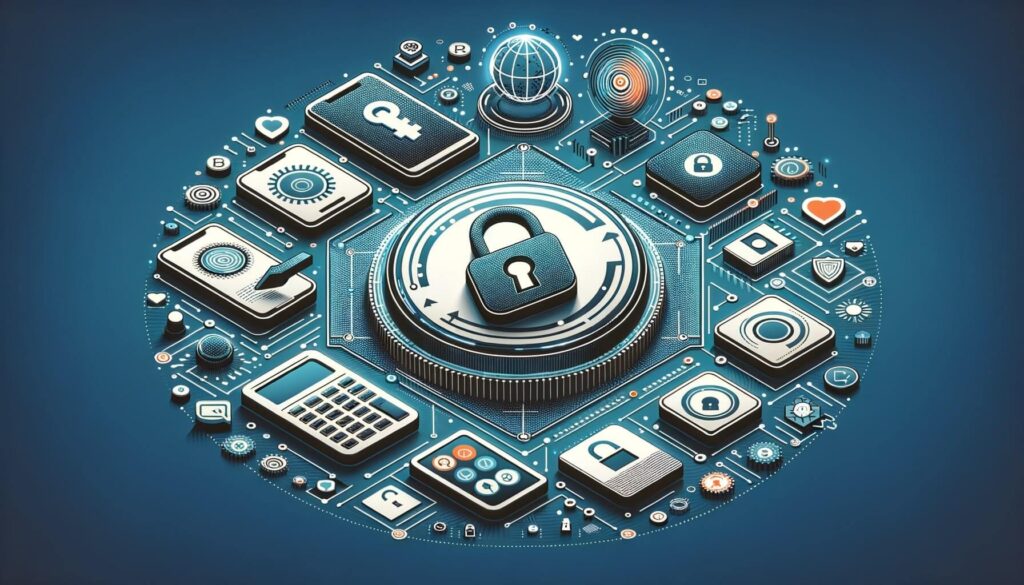In today’s digital age, where online transactions have become the norm, ensuring the security of payment gateways is of utmost importance. With the increasing number of cyber threats and data breaches, it is crucial for businesses to implement robust security measures to protect sensitive customer information. One such security measure is Multi-Factor Authentication (MFA), which adds an extra layer of protection to payment gateways.
In this article, we will explore the importance of MFA for payment gateways and provide a step-by-step guide on how to set it up.
Understanding the Importance of MFA for Payment Gateways

Payment gateways act as a bridge between customers and merchants, facilitating secure online transactions. However, they are also prime targets for cybercriminals seeking to exploit vulnerabilities and gain unauthorized access to sensitive financial data. This is where Multi-Factor Authentication comes into play. MFA adds an additional layer of security by requiring users to provide multiple forms of identification before granting access to the payment gateway.
The primary goal of Multi-Factor Authentication is to ensure that even if one factor of authentication is compromised, the attacker would still need to bypass additional layers of security to gain unauthorized access. By implementing MFA, businesses can significantly reduce the risk of unauthorized transactions, identity theft, and data breaches. According to a report by Verizon, 81% of data breaches in 2020 were caused by weak or stolen passwords. MFA can help mitigate this risk by adding an extra layer of protection beyond passwords.
Step-by-Step Guide: Setting Up Multi-Factor Authentication on Your Payment Gateway
Setting up Multi-Factor Authentication on your payment gateway may seem like a daunting task, but with the right guidance, it can be a straightforward process. Follow these step-by-step instructions to ensure a smooth implementation:
Step 1: Assess your current security measures
Before implementing Multi-Factor Authentication, it is essential to evaluate your existing security measures. Identify any potential vulnerabilities or weaknesses in your payment gateway system. This assessment will help you determine the most suitable MFA solution for your business.
Step 2: Choose the right MFA solution
There are various MFA solutions available in the market, each with its own set of features and authentication factors. Consider factors such as ease of use, compatibility with your payment gateway system, and the level of security provided. Some popular Multi-Factor Authentication solutions include SMS-based authentication, mobile apps, biometric authentication, and hardware tokens.
Step 3: Define your authentication factors
Authentication factors are the different pieces of information or credentials required to verify a user’s identity. Common authentication factors include something the user knows (passwords, PINs), something the user has (smartphone, hardware token), and something the user is (biometric data). Determine which combination of factors will provide the highest level of security for your payment gateway.
Step 4: Implement Two-Factor Authentication (2FA)
Two-Factor Authentication (2FA) is a widely used MFA method that requires users to provide two different types of authentication factors. Typically, this involves a combination of something the user knows (password) and something the user has (mobile device). Implementing 2FA significantly enhances the security of your payment gateway by adding an extra layer of protection.
Step 5: Explore Biometric Authentication
Biometric authentication, such as fingerprint or facial recognition, offers a high level of security and convenience. Many smartphones and devices now come equipped with biometric sensors, making it easier than ever to implement this authentication factor. Biometric authentication can be integrated into your payment gateway system to provide a seamless and secure user experience.
Step 6: Integrate One-Time Passwords (OTP)
One-Time Passwords (OTP) are temporary codes that are generated and sent to the user’s registered mobile device. These passwords are valid for a single login session or transaction and provide an additional layer of security. Integrating OTP into your payment gateway system ensures that even if a user’s password is compromised, the attacker would still need access to the OTP to gain unauthorized entry.
Step 7: Enhance security with Hardware Tokens
Hardware tokens are physical devices that generate unique codes or passwords for authentication. These tokens can be in the form of USB devices, smart cards, or key fobs. Hardware tokens provide an added layer of security as they are not susceptible to phishing attacks or malware. Integrating hardware tokens into your payment gateway system can significantly enhance security and protect against unauthorized access.
Choosing the Right Authentication Factors for Your Payment Gateway

When it comes to choosing the right authentication factors for your payment gateway, there is no one-size-fits-all solution. The choice of authentication factors depends on various factors such as the nature of your business, the level of security required, and the user experience you want to provide. Here are some commonly used authentication factors and their benefits:
1. Passwords/PINs: Passwords and PINs are the most common form of authentication factors. They are easy to implement and familiar to users. However, passwords can be easily compromised if not properly managed. It is crucial to enforce strong password policies and educate users about the importance of creating unique and complex passwords.
2. Mobile Apps: Mobile apps provide a convenient and secure way to implement Multi-Factor Authentication. Users can receive push notifications or generate OTPs directly from their smartphones. Mobile apps also offer additional security features such as biometric authentication and device binding.
3. Biometric Authentication: Biometric authentication, such as fingerprint or facial recognition, offers a high level of security and convenience. Biometric data is unique to each individual, making it difficult for attackers to replicate. Integrating biometric authentication into your payment gateway system can provide a seamless and secure user experience.
4. SMS-based Authentication: SMS-based authentication involves sending OTPs via SMS to the user’s registered mobile device. While this method is widely used, it is not the most secure as SMS messages can be intercepted or spoofed. However, it can still provide an additional layer of security when combined with other authentication factors.
Implementing Two-Factor Authentication (2FA) for Enhanced Security

Two-Factor Authentication (2FA) is a widely adopted Multi-Factor Authentication method that adds an extra layer of security to payment gateways. By requiring users to provide two different types of authentication factors, 2FA significantly reduces the risk of unauthorized access. Here are some key benefits of implementing 2FA:
1. Stronger Security: 2FA adds an additional layer of security beyond passwords. Even if a user’s password is compromised, the attacker would still need access to the second factor (e.g., mobile device) to gain unauthorized entry.
2. Reduced Risk of Data Breaches: According to a study by Google, enabling 2FA can block up to 99% of automated bot attacks. By implementing 2FA, businesses can significantly reduce the risk of data breaches and unauthorized transactions.
3. Enhanced User Experience: While security is paramount, it is also essential to provide a seamless user experience. 2FA methods such as push notifications or mobile apps offer a convenient and user-friendly way to authenticate users without compromising security.
4. Compliance with Regulatory Requirements: Many industries, such as finance and healthcare, have strict regulatory requirements for data security. Implementing 2FA can help businesses meet these compliance standards and avoid hefty fines or legal consequences.
Exploring Biometric Authentication for Payment Gateways

Biometric authentication has gained significant popularity in recent years due to its high level of security and convenience. By using unique physical or behavioral characteristics, such as fingerprints or facial recognition, biometric authentication provides a robust and reliable method of verifying a user’s identity. Here are some key benefits of exploring biometric authentication for payment gateways:
1. Enhanced Security: Biometric data is unique to each individual, making it difficult for attackers to replicate. By integrating biometric authentication into your payment gateway system, you can significantly enhance security and protect against unauthorized access.
2. Convenience and User Experience: Biometric authentication offers a seamless and user-friendly experience. Users no longer need to remember complex passwords or carry physical tokens. With a simple touch or glance, they can securely authenticate themselves and complete transactions.
3. Reduced Friction: Traditional authentication methods such as passwords or PINs can be prone to errors or forgotten. Biometric authentication eliminates the need for users to remember or enter credentials manually, reducing friction and improving the overall user experience.
4. Compliance with Privacy Regulations: Biometric data is considered highly sensitive and is subject to strict privacy regulations in many jurisdictions. When implementing biometric authentication, it is crucial to ensure compliance with applicable laws and regulations to protect user privacy.
Integrating One-Time Passwords (OTP) in Your Payment Gateway
One-Time Passwords (OTP) are temporary codes that are generated and sent to the user’s registered mobile device. These passwords are valid for a single login session or transaction and provide an additional layer of security. Integrating OTP into your payment gateway system can significantly enhance security and protect against unauthorized access. Here are some key benefits of integrating OTP:
1. Added Layer of Security: OTP adds an extra layer of security beyond passwords. Even if a user’s password is compromised, the attacker would still need access to the OTP to gain unauthorized entry.
2. Time-Sensitive: OTPs are time-sensitive and expire after a certain period. This ensures that even if an OTP is intercepted, it cannot be used beyond its validity period, reducing the risk of unauthorized access.
3. Convenience: OTPs can be generated and sent to the user’s mobile device in real-time, providing a convenient and user-friendly authentication method. Users do not need to carry physical tokens or remember complex passwords.
4. Cost-Effective: Implementing OTP does not require significant infrastructure or hardware investments. It can be easily integrated into existing payment gateway systems, making it a cost-effective solution for enhancing security.
Enhancing Security with Hardware Tokens for Multi-Factor Authentication
Hardware tokens are physical devices that generate unique codes or passwords for authentication. These tokens can be in the form of USB devices, smart cards, or key fobs. Hardware tokens provide an added layer of security as they are not susceptible to phishing attacks or malware. Integrating hardware tokens into your payment gateway system can significantly enhance security and protect against unauthorized access. Here are some key benefits of using hardware tokens for Multi-Factor Authentication:
1. Strong Security: Hardware tokens generate unique codes or passwords that are difficult to replicate. They provide a higher level of security compared to traditional authentication methods such as passwords or PINs.
2. Protection against Phishing Attacks: Hardware tokens are not susceptible to phishing attacks as they require physical possession of the token to generate the authentication code. This protects users from falling victim to phishing scams or entering their credentials on malicious websites.
3. Offline Authentication: Hardware tokens do not rely on an internet connection for authentication. This makes them suitable for environments with limited or no connectivity, ensuring uninterrupted access to the payment gateway.
4. Compliance with Regulatory Requirements: Many industries, such as finance and healthcare, have strict regulatory requirements for data security. Implementing hardware tokens can help businesses meet these compliance standards and ensure the protection of sensitive customer information.
Frequently Asked Questions (FAQs) about Multi-Factor Authentication on Payment Gateways
Q1: What is Multi-Factor Authentication (MFA)?
A1: Multi-Factor Authentication (MFA) is a security measure that requires users to provide multiple forms of identification before granting access to a system or application. It adds an extra layer of protection to payment gateways by combining different authentication factors such as passwords, biometrics, or hardware tokens.
Q2: Why is Multi-Factor Authentication important for payment gateways?
A2: Payment gateways handle sensitive financial data and are prime targets for cybercriminals. Implementing Multi-Factor Authentication helps protect against unauthorized access, data breaches, and identity theft. It adds an additional layer of security beyond passwords, reducing the risk of compromised accounts and fraudulent transactions.
Q3: What are the different authentication factors used in MFA?
A3: Common authentication factors used in MFA include something the user knows (passwords, PINs), something the user has (mobile device, hardware token), and something the user is (biometric data). By combining these factors, Multi-Factor Authentication ensures a higher level of security compared to single-factor authentication methods.
Q4: How does biometric authentication work for payment gateways?
A4: Biometric authentication uses unique physical or behavioral characteristics, such as fingerprints or facial recognition, to verify a user’s identity. By integrating biometric authentication into payment gateways, businesses can provide a secure and convenient user experience while reducing the risk of unauthorized access.
Q5: Are hardware tokens necessary for Multi-Factor Authentication?
A5: Hardware tokens are not necessary for Multi-Factor Authentication, but they provide an added layer of security. Hardware tokens generate unique codes or passwords that are difficult to replicate, protecting against phishing attacks and unauthorized access. They are particularly useful in environments with limited connectivity or strict regulatory requirements.
Conclusion
In conclusion, setting up Multi-Factor Authentication (MFA) on your payment gateway is crucial for ensuring the security of online transactions. MFA adds an extra layer of protection by requiring users to provide multiple forms of identification before granting access. By implementing Multi-Factor Authentication, businesses can significantly reduce the risk of unauthorized transactions, identity theft, and data breaches.
In this article, we discussed the importance of Multi-Factor Authentication for payment gateways and provided a step-by-step guide on how to set it up. We explored different authentication factors such as passwords, biometrics, one-time passwords (OTP), and hardware tokens. Each authentication factor offers its own set of benefits and should be chosen based on the specific needs of your business.
Remember, security should always be a top priority when it comes to payment gateways. By implementing Multi-Factor Authentication and staying up to date with the latest security practices, you can protect your customers’ sensitive information and build trust in your online payment processes.
